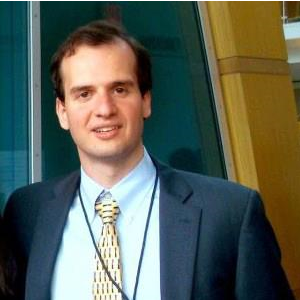We are delighted to introduce our latest Analytical Methods Emerging Investigator, Alexander Zestos!
 Alexander Zestos is a Greek-American from Williamsburg, VA. He completed a BS/MS degree in Chemistry from the College of William and Mary in Williamsburg, VA in 2008. There, he performed research with Dr. William H. Starnes, Jr. on the use of metal-clay additives and ester thiols to promote the smoke suppression, fire retrardance, and thermal stability of poly(vinyl chloride). He completed his PhD in Chemistry in 2014 at the University of Virginia, where he worked with Dr. Jill Venton and investigated the use of alternative carbon nanomaterials for enhanced neurochemical detection using fast scan cyclic voltammetry. From 2014-2017, he was a postdoctoral research fellow in the Departments of Chemistry and Pharmacology at the University of Michigan and was co-mentored by Professors Robert T. Kennedy and Margaret E. Gnegy. There, he developed microdialysis and liquid chromatography-mass spectrometry assays to measure neurochemical dynamics in rats after the administration of amphetamine and cocaine. He also developed the use of protein kinase C (PKC) inhibitors as novel therapeutics for amphetamine abuse in addition to measuring acetylcholine release from beige fat adipocytes and the neurochemical biomarkers of epileptic seizures. Since 2017, he is an Assistant Professor in the Department of Chemistry and Center for Behavioral Neuroscience at American University in Washington, D.C., where he develops electrochemical methods and electrode materials to enhance neurotransmitter detection for a wide variety of applications.
Alexander Zestos is a Greek-American from Williamsburg, VA. He completed a BS/MS degree in Chemistry from the College of William and Mary in Williamsburg, VA in 2008. There, he performed research with Dr. William H. Starnes, Jr. on the use of metal-clay additives and ester thiols to promote the smoke suppression, fire retrardance, and thermal stability of poly(vinyl chloride). He completed his PhD in Chemistry in 2014 at the University of Virginia, where he worked with Dr. Jill Venton and investigated the use of alternative carbon nanomaterials for enhanced neurochemical detection using fast scan cyclic voltammetry. From 2014-2017, he was a postdoctoral research fellow in the Departments of Chemistry and Pharmacology at the University of Michigan and was co-mentored by Professors Robert T. Kennedy and Margaret E. Gnegy. There, he developed microdialysis and liquid chromatography-mass spectrometry assays to measure neurochemical dynamics in rats after the administration of amphetamine and cocaine. He also developed the use of protein kinase C (PKC) inhibitors as novel therapeutics for amphetamine abuse in addition to measuring acetylcholine release from beige fat adipocytes and the neurochemical biomarkers of epileptic seizures. Since 2017, he is an Assistant Professor in the Department of Chemistry and Center for Behavioral Neuroscience at American University in Washington, D.C., where he develops electrochemical methods and electrode materials to enhance neurotransmitter detection for a wide variety of applications.
Read Alexander’s Emerging Investigator series paper “Polymer modified carbon fiber-microelectrodes and waveform modifications enhance neurotransmitter metabolite detection” and find out more about him in the interview below:
Your recent Emerging Investigator Series paper focuses on carbon-fiber microelectrodes and waveform modifications for the detection of neurotransmitter metabolites. How has your research evolved from your first article to this most recent article?
My research has evolved greatly over time. As a BS/MS student at the College of William and Mary, I investigated the development of smoke suppressants, fire retardants, and thermal stabilizers for poly(vinyl chloride). As a PhD student at the University of Virginia, I became more interested in research that could be used for biomedical applications. I utilized alternative carbon nanomaterials as electrodes for enhanced neurochemical detection with fast scan cyclic voltammetry (FSCV). As a postdoctoral research fellow in the Departments of Chemistry and Pharmacology at the University of Michigan, I used in vivo microdialysis coupled with liquid chromatography-tandem mass spectrometry (LC-MS/MS) to detect multiple neurotransmitters in vivo and measure the effects of PKC inhibitors on amphetamine-stimulated dopamine efflux. We were able to measure over 30 neurochemicals simultaneously in freely behaving animals, which had many applications for studying drugs of abuse, obesity, and epilepsy. At American University, I am combining the use of voltammetry, HPLC, and other methods to enhance neurochemical detection that is applicable to studying the effects of many drugs and behavioural states.
What aspect of your work are you most excited about at the moment?
I am excited by many projects. Currently, we are developing methods of neurochemical enhancement with carbon fiber-microelectrodes to study neurochemical dynamics in diabetic zebrafish and the effect of cathinone bath salts in rats. Moreover, we are also using carbon nanomaterials such as carbon nanotube yarns and polymer coatings to enhance neurochemical sensitivity, temporal resolution, and promote anti-fouling properties. My research continues to be at the interface of materials science, analytical measurements, and biomedical applications.
In your opinion, what are the key design considerations for developing novel electrode materials and waveforms for the detection of biomolecules?
The key design considerations for developing novel electrode materials and waveforms are to tune the electrode material selectively to each respective analyte. For this paper, we applied positively charged polymer coatings and removed the negative holding potential in order to enhance DOPAC detection, which is negatively charged at a physiological pH. The detection of other analytes such as dopamine, serotonin, norepinephrine, and others can be enhanced with other coatings and waveform modifications that are specific to each neurotransmitter being detected taking into account size, charge, chemical structure, and other considerations.
What do you find most challenging about your research?
In my opinion, the most challenging part of my research is continuous trial and error and overall complexity. However, this can also be the most rewarding aspect of research when an unexpected discovery is made. Reproducibility is also key in making and testing microelectrodes to measure neurochemical dynamics in small brain regions.
How do you spend your spare time?
I enjoy the outdoors, sports, traveling, and spending time with my family.
Which profession would you choose if you were not a scientist?
I most likely would be a physician or diplomat. I always considered myself to by a people-person and enjoy traveling, which is a big part of being a scientist.
Can you share one piece of career-related advice or wisdom with other early career scientists?
I would recommend pursuing your passion, yet being able to adapt to new circumstances, and to be continually persistent in your work. There will always be ups and downs in your research, but it is important to remain focused on the long-term goals of your career.











